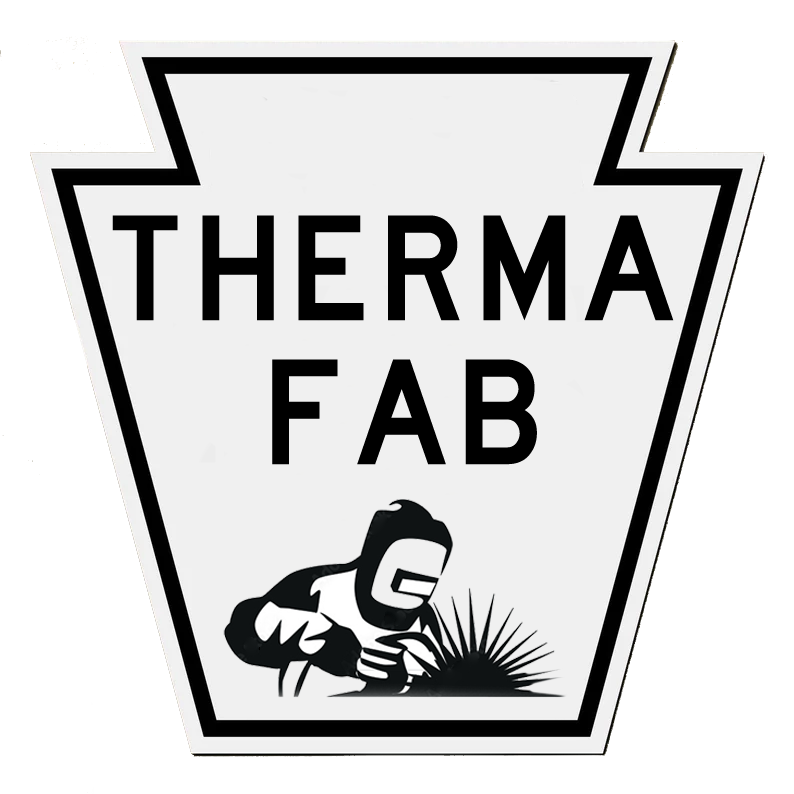Premiere Metal Casting - Made in the USA
Metal casting is where raw strength meets precision — a process that transforms molten metal into the components that power heavy industry. From manufacturing to energy production, casting remains a critical foundation of American industry.
Access Doors vs. Peep Doors: What’s the Real Difference?
In industrial settings, it’s easy to confuse access doors with peep doors or observation ports—but the difference is all about function and flexibility.
Meet Mike – Our Master Welder
At Thermafab, we believe the strength of our work starts with the strength of our people. Meet Mike, our certified welder whose steady hands and sharp eye help bring precision and reliability to every project.
What Is a Rabble Arm?
In the world of industrial furnaces, efficiency and consistency are everything. One of the most important components in achieving this is the rabble arm. Though often overlooked, this rotating or oscillating arm plays a critical role in moving, stirring, and breaking up material inside a hearth furnace.
How Rabble Arms Keep Hearth Furnaces Running Smoothly
In the core of every blast furnace lies the tuyere—a high-performance nozzle that injects hot air into the furnace to ignite coke and smelt iron ore. Made from copper and water-cooled for durability, tuyeres must endure extreme temperatures and relentless conditions.
Sand vs. Investment Casting: What Suits Your Project?
Sand vs. Investment Casting: What Suits Your Project?
Why Summer Is the Perfect Time to Upgrade High-Temp Components
In the core of every blast furnace lies the tuyere—a high-performance nozzle that injects hot air into the furnace to ignite coke and smelt iron ore. Made from copper and water-cooled for durability, tuyeres must endure extreme temperatures and relentless conditions.
How Tuyeres Improve Blast Furnace Efficiency (And Save You Money)
In the world of blast furnaces, it's often the small components that make the biggest difference. One of the most critical (and often overlooked) parts of your furnace system is the tuyere—a specially designed nozzle that delivers high-pressure air directly into the combustion zone.
While it may seem simple, the tuyere plays a key role in driving performance, protecting your furnace, and cutting costs.
Tuyeres by Thermafab
In the core of every blast furnace lies the tuyere—a high-performance nozzle that injects hot air into the furnace to ignite coke and smelt iron ore. Made from copper and water-cooled for durability, tuyeres must endure extreme temperatures and relentless conditions.
🏭 Fabricating the Future of Carbon Removal
As the world races to meet climate goals, Direct Air Capture (DAC) is emerging as a powerful technology to remove CO₂ from the atmosphere. At Therma-Fab, we specialize in precision metal fabrication for industrial innovation—and DAC is no exception. Here are three cutting-edge DAC companies making headlines in 2025, and how Therma-Fab is positioned to support this growing industry.
How Fabricators Are Helping Scale Direct Air Capture Technology
As the world races to combat climate change, Direct Air Capture (DAC) technology is emerging as a vital tool for removing CO₂ from the atmosphere. However, scaling DAC systems requires high-quality fabrication of specialized components like tuyeres and lime coolers—and that’s where expert fabricators come in.
The Critical Role of Tuyeres in Blast Furnaces
Tuyeres are a crucial component of blast furnaces, acting as the entry point for hot air (blast) to facilitate the combustion of coke and maintain high temperatures for efficient iron production. These water-cooled copper nozzles must withstand extreme heat and pressure, making their design and maintenance vital for furnace performance.
Transform Your Engineering Designs with 3D Drawings & CADD Services
In the world of engineering, precision and clarity are non-negotiable. Whether you’re working on a new project or updating existing designs, having the right tools and expertise at your disposal can make all the difference. That’s where our 3D Drawings and CADD (Computer-Aided Design and Drafting) services come in. We’re here to bring your concepts to life and ensure your designs meet the highest industry standards.
The Importance of Calciner Tuyere in Industrial Applications
At Therma-Fab, we pride ourselves on our commitment to delivering high-performance industrial solutions that ensure operational efficiency and reliability in critical sectors like mining, metallurgy, and cement manufacturing. Among the many essential components we produce, the Calciner Tuyere stands out as a vital piece of equipment in high-temperature calcination processes. But what exactly is a Calciner Tuyere, and why is it so important? Let’s dive deeper into this key industrial component.
We Have Peep Doors in Stock!
At ThermaFab, we're always committed to enhancing the safety, security, and convenience of your industrial environments. We're excited to announce that we now have Peep Doors in stock, ready to meet your facility's needs!
Reliable Imported Chinese Metal Castings
In today's global marketplace, sourcing high-quality materials and components is essential for the success of many industries. When it comes to metal castings, reliability, durability, and cost-effectiveness are key factors that determine the performance of the final product. For businesses seeking dependable imported metal castings, Therma Fab stands out as a trusted partner, specializing in delivering high-quality Chinese metal castings to meet the most demanding industrial needs.
Last Call for Q3 Budget Utilization – Maximize Your Investment Now!
As Q3 draws to a close, it's time to think strategically about how to use your remaining budget. Investing in our top-notch fabrication and welding services is a smart move to ensure you meet your year-end goals with precision and quality. Whether you're looking to enhance a current project or start something new, our custom solutions can make all the difference. Don’t let your budget go to waste—partner with us now to set your business up for a strong finish to the year.
How Rabble Arms Work in Multiple Hearth Furnaces
A critical component of these multiple hearth furnaces is the rabble arms. Let’s delve into the workings of multiple hearth furnaces and understand the pivotal role of rabble arms in these systems.















